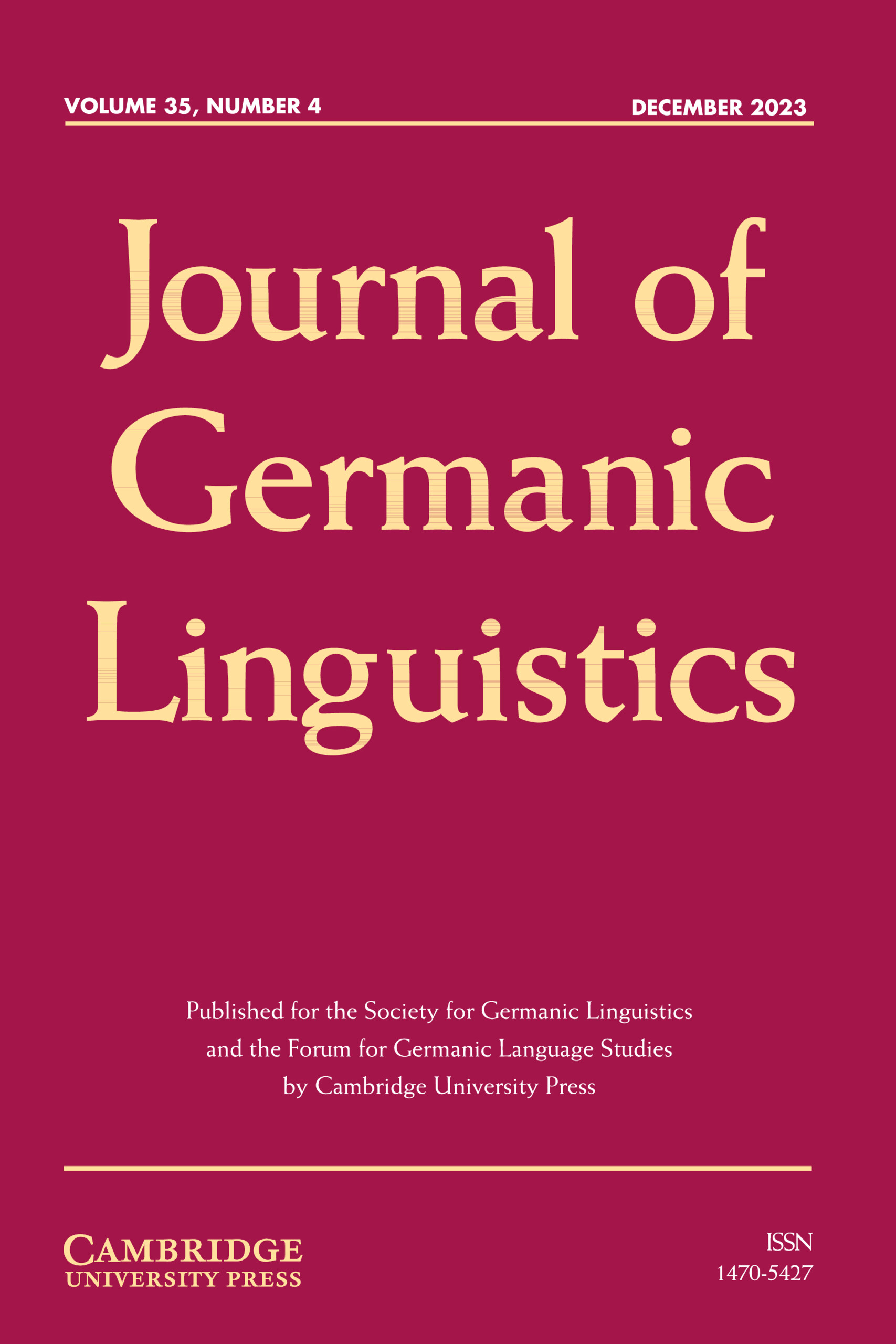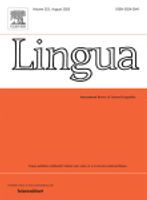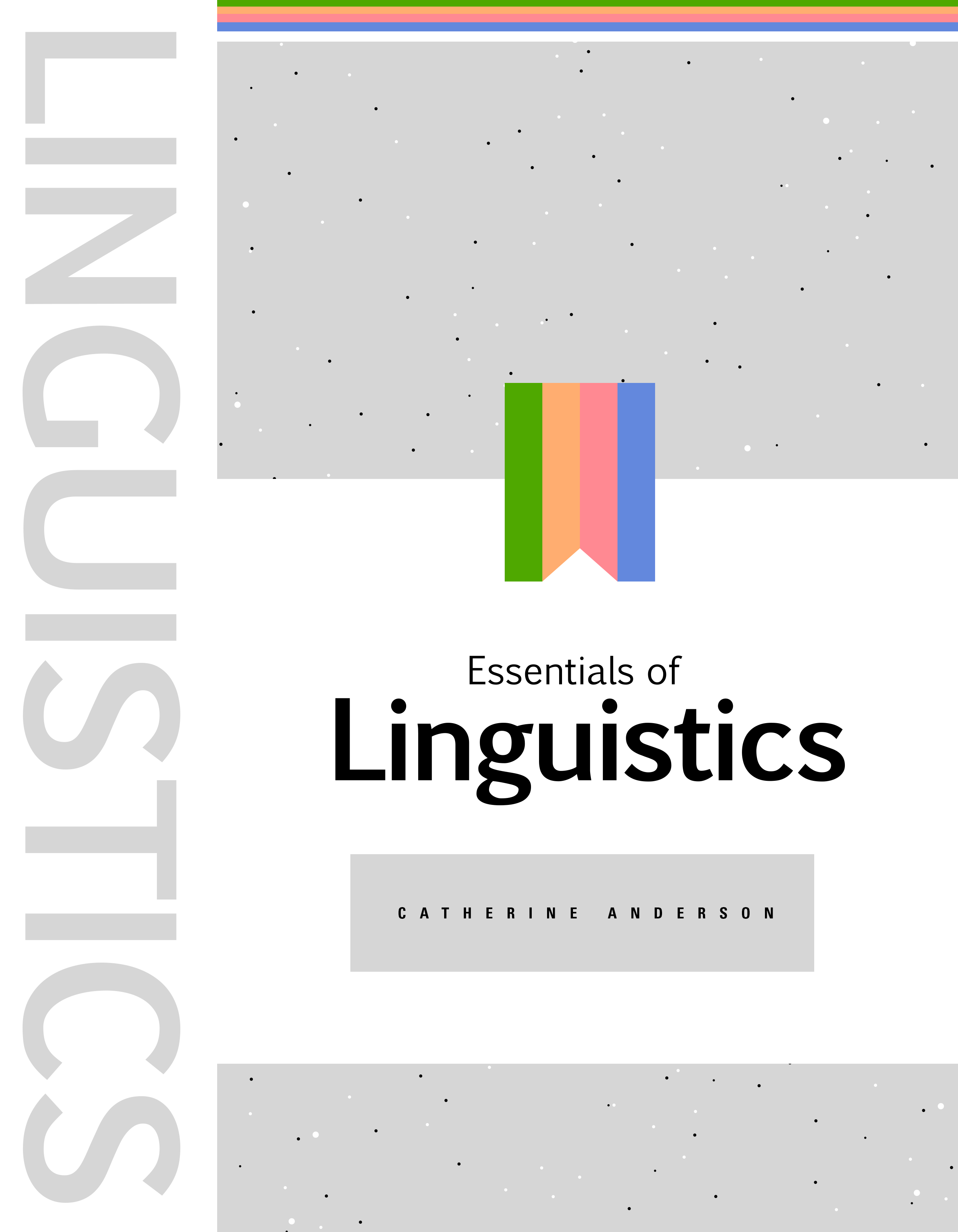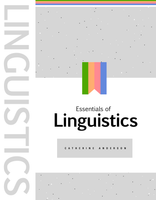Explore web search results related to this domain and discover relevant information.

Do-support is a phenomenon in English grammar in which speakers or writers have to include the verb "do" as an auxiliary verb...
Do-support is a specific linguistic term for a phenomenon in English grammar where speakers or writers have to include the verb “do” as an auxiliary verb. This happens with questions, which are also called interrogative clauses, as well as negative statements or responses.With the above example, the question form also adds do-support, where the question would be phrased, “do you want to go"? Here, the verbs “do” and “go” are at separate ends of the sentence, which may be confusing for some language learners. The key idea is to identify the additional “do” verb, and be able to understand its use in the language.Instructors or linguists may present do-support in many different ways. This idea might be called by various names, or just demonstrated through modeling of interrogatives, positives, and negatives in sequence. By modeling question, positive, and negative forms of the same sentences, it becomes clear that two of these forms have the additional “do” verb in different forms, according to the subject.In general, understanding do-support will help English-language learners understand the broader uses of auxiliary verbs. For example, the verb “be” in various forms is also used similarly in questions and negative responses.

The following are several types of support services that companies can use to maintain their IT infrastructure and other procedures to increase their effectiveness: Many businesses store data and require a place to do so in an easy and effective manner. There are several data storage services ...
The following are several types of support services that companies can use to maintain their IT infrastructure and other procedures to increase their effectiveness: Many businesses store data and require a place to do so in an easy and effective manner. There are several data storage services available that assist a company in securely storing data.Learn the definition of support services, explore the different uses of support services and view a list of example services these professionals use.If you want to pursue a career in support services, learning what they are and examples of these services can help determine if this field is right for you.In this article, we define what support services are, describe the different uses and importance of support services and provide a list of example services these professionals use.Support services typically refer to a business' use of technology in the workplace. Some technologies offer support services through third-party entities, also known as IT support services. These services provide the necessary support to ensure a business operates technology in an efficient and safe manner.
Before we begin, I want to clarify my terminology: Do-support is a feature of syntax, which means that it’s to do with word order and agreement. The syntax concerns itself with what is grammatical in a descriptive way, not what we prefer in a prescriptive way2.
English and Scots didn’t always have do-support, and sentences like ‘I like not cheese’ used to be completely grammatical. We start to see do-support appearing in English around the 15th century, and in the 16th century for Scots.As is the case with language change, do-support didn’t become the mandatory construction overnight; in both languages we see a period where sentences with and without do-support are used variably which lasts for centuries before do-support eventually wins out (in the 18th-19th century).Interestingly, in this period of change we also see do-support in non-negated sentences which aren’t intended to be emphatic, looking like: ‘I do like cheese’. These constructions never fully catch on though, and the rise and fall of this affirmative declarative do has been called a “failed change”.There have also been suggestions that it was contact with Welsh that introduced do-support into English, since Welsh had a similar structure. This account is often met with scepticism, one reason being that we see very little influence from any celtic language, Welsh included, on English and Scots grammar in general.
144 votes, 92 comments. I've studied a bunch of languages and the one thing that makes English stand out the most is the presence of "do-support". I…
In German it doesn't sound too weird imo. Like, usually "I don't do that" would be "ich mach das nicht" without any do-support. But ig one could say "ich tu das nicht machen", inserting tu, which is semantically and genetically equivalent to English do. Even though it's not correct as far as Standard German is concerned, and sounds sorta "informal", it doesn't sound too unnatural imo.Do support is used differently in the Celtic languages that had it, there is no need for the explanation as the feature naturally occurs in other West Germanic language (in a way actually similar to how English uses it), but most importantly Celtic languages evidently had close to 0 influence on the development of English so it was always an unusual theory in that it would be extremely unlikely a language would adopt such a fundamental grammatical feature from them given the history, or lack thereof.As far as Romance goes, there is at least one variety, the dialect of Monno (Brescia, Lombardy), that has do-support in main interrogatives. This is something interesting! I had no idea that some Lombard varieties had this feature. ... It is very intriguing indeed! I'd be very curious to know if the neighbouring varieties of Lombard have it, but unfortunately I think there's no further data on it and the authors don't discuss it, as is very typical of (some) minimalist authors.While not the same, this is similar in the sentence that an auxiliary or support verb is required when the clause is negated. ... I'm not a native Italian speaker, but I speak it well enough to answer your question. The Italian sentence has a different meaning from the one you intend. "Far fare" is a construction that means "make someone do something", so your sentence means something like "I don't make [he/she/them] eat the pasta".

Answer (1 of 3): I can’t remember exactly where I read it, but I do (:D) seem to remember once reading an article mentioning that the only other language in the world with an equivalent to Do-support (using the verb “do” in various forms for questions, negatives, emphasis etc) is Welsh, ...
Answer (1 of 3): I can’t remember exactly where I read it, but I do (:D) seem to remember once reading an article mentioning that the only other language in the world with an equivalent to Do-support (using the verb “do” in various forms for questions, negatives, emphasis etc) is Welsh, i.e. the ...

Do insertion or Do Support: The usage of the auxiliary verb “do” and its forms “does” and “did” is known as do-insertion or do-support.
Adding “do” makes it an interrogative sentence.Furthermore, the forms of do such as “does” and “Did” are used for the same thing.You do not need to rush to school.He does not listen to music.
The Rise and Fall of Constructions and the History of English Do-Support - Volume 20 Issue 1
Do-support is a unique characteristic of English. Many languages other than English have do-periphrasis but not English-type do-support. This raises the obvious question: What is special about English? The goal of this paper is to provide an account of English do-support that explains why do-support, with its attendant properties, is found uniquely in English.I review the classical derivational approaches to do-support and argue that they do not satisfactorily capture the generalizations. I suggest an alternative, non-derivational account of contemporary do-support that makes crucial use of constructions. Finally, I propose an account of the history of do-support in English that characterizes the changes in terms of the content and scope of constructions.Other languages do not have do-support, although many languages have periphrastic do of some type (van der Auwera Reference Auwera1999, Jäger Reference Jäger2006, Wichmann & Wohlgemuth, Reference Wichmann, Wohlgemuth, Stolz, Palomo and Bakkein press). My goal here is to give an account of English do-support that explains why do-support, with its attendant properties, is found uniquely in English among the world's languages.In Modern English, finite tense marking must be licensed on a main verb through a mechanism other than V-to-I; this phenomenon is typically referred to as Affix Hopping (AH) (see Chomsky Reference Chomsky1957 and, for recent reappraisals, Bobaljik Reference Bobaljik1995, Lasnik Reference Lasnik, Lappin and Benmamoun1999, and Freidin Reference Freidin2004).Footnote 6Do-support, on this general view, marks the position of I0 when it is not immediately adjacent to the verb and hence cannot appear on it through AH. While this approach to do-support captures a number of important generalizations, it is problematic in two respects.


Just like most varieties of West Germanic, virtually all varieties of German use a construction in which a cognate of the English verb do (standard German tun) functions as an auxiliary and selects another verb in the bare infinitive, a construction known as do-periphrasis or do-support.
It builds on a previous analysis by Bader and Schmid (An OT-analysis of do-support in Modern German, 2006) but (i) extends it from root clauses to subordinate clauses and (ii) aims to capture all of the major distributional patterns found across (mostly non-standard) varieties of German.In so doing, the data are used as a testing ground for different models of German clause structure. At first sight, the occurrence of do in subordinate clauses, as found in many varieties, appears to support the standard CP-IP-VP analysis of German. In actual fact, however, the full range of data turn out to challenge, rather than support, this model.Vorstudien zur Theorie einer projektiven Grammatik, Narr, Tübingen, 1993 et seq.). In sum, the do-support data will be shown to have implications not only for the analysis of clause structure but also for the OT constraints commonly assumed to govern the distribution of do, for the theory of non-projecting words (Toivonen in Non-projecting words, Kluwer, Dordrecht, 2003) as well as research on grammaticalization.Bader, Markus and Tanja Schmid. 2006. An OT-analysis of do-support in Modern German. Manuscript University of Konstanz.
Andrew Carnie presents Syntax: A Generative Introduction 4E. Wiley-Blackwell. Video 9.3: Do SupportThe phenomenon of do-support is introduced and an explanat...


Attempts to describe ‘what auxiliaries are and why they behave the way they do’ on the basis of syntactic criteria have not been successful. This stud…
The research for this paper was supported by a grant from the Social Sciences and Humanities Research Council of Canada.This study, which approaches the problem from the point of view of meaning, postulating that any word is used for the meaning it expresses, focuses on the nature of DO, the auxiliary usually considered a ‘dummy’ word. It proposes for DO a residual lexical meaning, the representation of a stretch of duration, as well as the grammatical meaning of any verb in the indicative.
In English grammar, ‘do-insertion’ or ‘do-support’ refers to the use of the auxiliary verb ‘do’, including its reflected forms ‘does’ and ‘did'. There are some common uses of do-insertion
In English grammar, ‘do-insertion’ or ‘do-support’ refers to the use of the auxiliary verb ‘do’, including its reflected forms ‘does’ and ‘did'. There are some common uses of do-insertion which are described below.We consider a sentence, “You want money”. Here, 'you' is the subject, 'want' is the verb and 'money' is the complement. But there is no auxiliary verb in this sentence. That's why we need to add a dummy 'do' to turn this assertive sentence into an interrogative sentence.You want money (You do want money).She likes the dress (She does like the dress).


If you’re inspired by the work DPSs do and want to learn more, visit our Direct Support Careers page. Whether you’re exploring a new path or looking for meaningful work, this role offers the chance to make a real difference.
To all Direct Support Professionals, thank you. Your care, commitment, and compassion make a lasting impact on the lives of others. You are the heart of support, and we are grateful for all that you do.Celebrate National DSP Appreciation Week and learn about what Direct Support Professional (DSP) does.This week marks DSP Appreciation Week, a time to recognize the incredible work of Direct Support Professionals (DSPs) across the country. DSPs are the individuals who provide daily, hands-on support to people with developmental disabilities. But they are more than caregivers.For people with developmental disabilities, having consistent, compassionate support can make all the difference. DSPs help create warm environments where individuals feel safe, valued, and empowered to live life on their own terms.
This version of the eBook is not being updated regularly. To have access to the most current version, please link to https://ecampusontario.pressbooks.pub/essentialsoflinguistics/
Learn more about how Pressbooks supports open publishing practices. ... When we form a question that includes a modal auxiliary, the modal moves from the T-head position to the C-head position: ... When a sentence contains no auxiliary, only a lexical verb, it appears that the lexical verb cannot move out of its V-head position. So we’ve proposed that the auxiliary do enters at the T-head position and then moves up to the C-head position:You do not have a headache. From all of this evidence, we can conclude that MERGE treats these three kinds of heads differently: Modals are generated in T-head, from where they can move to C-head if necessary to support a [+Q] feature.Instead, when have is behaving like a lexical verb, it needs do-support.English also uses do-support to form negated sentences, which follow the same pattern: sentences with modals don’t need do, but sentences with lexical verbs and no auxiliaries do need do:

Do-support refers to the grammatical construction in English where the auxiliary verb 'do' is used to form questions, negatives, and emphatic statements, especially in simple present and simple past tenses. This construction helps to maintain the syntactic structure of a sentence when the main ...
Do-support refers to the grammatical construction in English where the auxiliary verb 'do' is used to form questions, negatives, and emphatic statements, especially in simple present and simple past tenses. This construction helps to maintain the syntactic structure of a sentence when the main verb does not have its own auxiliary.Do-support enhances emphasis in affirmative statements by adding 'do' before the main verb, as seen in constructions like 'I do agree with you.' This use of do-support is important because it adds intensity to the assertion being made.Analyze the implications of using do-support in English grammar and how it reflects broader patterns of auxiliary verb usage. The use of do-support in English grammar highlights significant implications regarding how auxiliary verbs function within language. It demonstrates that English relies on auxiliary constructions not only for forming questions and negations but also for creating emphatic expressions.The primary verbs in a sentence that convey the main action or state of being, which can stand alone without auxiliary support. Emphatic Form: A grammatical structure used to emphasize a statement, often formed with 'do' as in 'I do want to go.'
We are familiar with the concept of "do support", where the verb do is used as an auxiliary verb. It can be found frequently in Shakespeare and before and it is claimed to derive from the
We are familiar with the concept of "do support", where the verb do is used as an auxiliary verb. It can be found frequently in Shakespeare and before and it is claimed to derive from the Celtic languages of Britain.I think the most likely answer is that any description of 'do support', whatever its provenance (Celtic vs Germanic vs Late Middle English), covers all the different varieties, including question/negation auxiliary 'do'.The fossilised, original "do support" is in fact common to all modern Germanic languages - it's unlikely there's any syntactic Celtic substrate in English - documented all the way back to Gothic and probably originating in Proto-Germanic; with the past tense of weak verbs formed with the infinitive stem suffixed with the past tense of the strong verb "to do" (I "walk-did" = "I walk-ed").It's worth noting that the "do support" seems to have flourished in the post-Norman Conquest period and beyond, when written Old English - bearing scant resemblance to Norse-influenced, increasingly Frenchified Middle English - was abandoned for good. Perhaps also relevant is the fact English - and Afrikaans?

With Focus settings in iOS 15 and iPadOS 15 or later, Do Not Disturb can silence calls, alerts, and notifications. When Do Not Disturb is on, a crescent moon icon appears in the status bar and on your Lock Screen.
Apple Intelligence is available in beta starting with iOS 18.1, iPadOS 18.1, and macOS Sequoia 15.1 when your device language and Siri language are set to the same supported language. Learn more about using Focus to stay in the moment by filtering notifications based on what you’re currently doing.Swipe down from the top of your Home Screen to open Control Center.Tap the Focus button where the Do Not Disturb crescent moon appears.If there is no moon icon, Do Not Disturb is currently turned off.
Support persons' roles may vary depending on the type of disability and a person's preference. Learn more now about what they do and who needs one.
Under the Customer Service Standard of the AODA, service providers’ policies must state that they welcome support persons. The Standard discusses how service providers must allow support persons in all public places. It also outlines what providers must do to require support persons and how they must advertise when they offer reduced rates for support persons.However, service providers committed to obeying these laws may still have many questions about support persons’ roles, such as what they do and how to tell the difference between support persons and companions.Providers know that support persons help people with disabilities maintain their independence, but might still wonder what, exactly, support persons do. Support persons’ roles vary depending on the type of disability a customer has.A support person can be a paid personal support worker (PSW), a volunteer, a family member, or a friend. PSWs are trained professionals. Family or friends usually do not have formal training, but they often have years of experience. People often have different support persons at different times.

This version of the eBook is not being updated regularly. To have access to the most current version, please link to https://ecampusontario.pressbooks.pub/essentialsoflinguistics/
Learn more about how Pressbooks supports open publishing practices. ... When we form a question that includes a modal auxiliary, the modal moves from the T-head position to the C-head position: ... When a sentence contains no auxiliary, only a lexical verb, it appears that the lexical verb cannot move out of its V-head position. So we’ve proposed that the auxiliary do enters at the T-head position and then moves up to the C-head position:You do not have a headache. From all of this evidence, we can conclude that MERGE treats these three kinds of heads differently: Modals are generated in T-head, from where they can move to C-head if necessary to support a [+Q] feature.Instead, when have is behaving like a lexical verb, it needs do-support.English also uses do-support to form negated sentences, which follow the same pattern: sentences with modals don’t need do, but sentences with lexical verbs and no auxiliaries do need do:

Northern Ireland operates a similar ... Support, overseen by the Department for Communities. It provides crisis loans for emergencies and community care grants to help people live independently. Anyone in Northern Ireland experiencing urgent financial difficulty can apply through the official nidirect website. Eligibility criteria may vary slightly between local councils, but generally, you can apply if you: ... Importantly, you do not need to ...
Northern Ireland operates a similar system called Discretionary Support, overseen by the Department for Communities. It provides crisis loans for emergencies and community care grants to help people live independently. Anyone in Northern Ireland experiencing urgent financial difficulty can apply through the official nidirect website. Eligibility criteria may vary slightly between local councils, but generally, you can apply if you: ... Importantly, you do not need to be receiving benefits to qualify for assistance.Applications are typically submitted online through your local council's website. In many cases, you can apply via an online portal, where you may need to provide supporting documents such as proof of income, bank statements, and identification .The Household Support Fund offers vital financial help, but act fast before funds run out 🏠This means that once the allocated funds are exhausted, no further applications can be processed, regardless of the calendar date. Therefore, it's advisable to apply as early as possible to increase the likelihood of receiving support.
Do-support (sometimes referred to as do-insertion or periphrastic do) in English grammar is the use of the auxiliary verb do (or one of its inflected forms, e.g. does) to form negated clauses and constructions which require subject–auxiliary inversion, such as questions.
The presence of an auxiliary (or copular) verb allows subject–auxiliary inversion to take place, as is required in most interrogative sentences in English. If there is already an auxiliary or copula present, do-support is not required when forming questions:The above principles do not apply to wh-questions if the interrogative word is the subject or part of the subject. Then, there is no inversion and so there is no need for do-support: Who lives here?, Whose dog bit you?In the same way that the presence of an auxiliary allows question formation, the appearance of the negating word not is allowed as well. Then too, if no other auxiliary or copular verb is present, do-support is required.Most combinations of auxiliary/copula plus not have a contracted form ending in suffix -n't, such as isn't, won't, etc. The relevant contractions for negations formed using do-support are don't, doesn't and didn't.In negative sentences, emphasis can be obtained by adding stress either to the negating word (if used in full) or to the contracted form ending in n't. That applies whether or not do-support is used: I wouldn't (or would not) take the risk. They don't (or do not) appear on the list.






